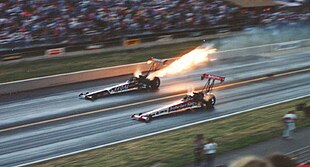Acceleration Affects Riding Performance
Acceleration changes a motorcycle’s velocity over time. In riding terms, this means how quickly your bike speeds up, slows down, or changes direction. The Klim Krios Pro helmet design accounts for these forces through its aerodynamic shape and balanced weight distribution.
Linear Forces Impact Comfort
When you accelerate in a straight line, the force pushes you backward into your seat. The Krios Pro’s lightweight design (3.25 lbs) helps reduce this effect on your neck muscles. The helmet’s aerodynamic profile cuts through air cleanly up to 85 mph with minimal buffeting.
Centripetal Forces Test Stability
During turns, centripetal acceleration creates forces that pull the helmet sideways. The Krios Pro’s carbon fiber shell and balanced weight distribution help maintain stability through corners. The peak visor stays remarkably stable under these lateral forces.
Deceleration Demands Protection
Hard braking creates forward forces that stress neck muscles and safety systems. The Koroyd protection system absorbs these forces through its engineered crumple zones. This technology helps protect against both direct impacts and the rotational forces common in motorcycle accidents.
The helmet’s design addresses all three types of acceleration forces riders encounter:
- Forward/backward during acceleration and braking
- Side-to-side during cornering
- Vertical during bumps and jumps
Through extensive testing, the Krios Pro has proven its ability to handle these varied forces while maintaining comfort and protection.
Citations:
https://en.wikipedia.org/wiki/Acceleration
In mechanics, acceleration is the rate of change of the velocity of an object with respect to time. Acceleration is one of several components of kinematics, the study of motion. Accelerations are vector quantities (in that they have magnitude and direction). The orientation of an object's acceleration is given by the orientation of the net force acting on that object. The magnitude of an object's acceleration, as described by Newton's Second Law, is the combined effect of two causes:
- the net balance of all external forces acting onto that object — magnitude is directly proportional to this net resulting force;
- that object's mass, depending on the materials out of which it is made — magnitude is inversely proportional to the object's mass.
| Acceleration | |
|---|---|
 In vacuum (no air resistance), objects attracted by Earth gain speed at a steady rate. | |
Common symbols | a |
| SI unit | m/s2, m·s−2, m s−2 |
Derivations from other quantities | |
| Dimension | |

The SI unit for acceleration is metre per second squared (m⋅s−2, ).
For example, when a vehicle starts from a standstill (zero velocity, in an inertial frame of reference) and travels in a straight line at increasing speeds, it is accelerating in the direction of travel. If the vehicle turns, an acceleration occurs toward the new direction and changes its motion vector. The acceleration of the vehicle in its current direction of motion is called a linear (or tangential during circular motions) acceleration, the reaction to which the passengers on board experience as a force pushing them back into their seats. When changing direction, the effecting acceleration is called radial (or centripetal during circular motions) acceleration, the reaction to which the passengers experience as a centrifugal force. If the speed of the vehicle decreases, this is an acceleration in the opposite direction of the velocity vector (mathematically a negative, if the movement is unidimensional and the velocity is positive), sometimes called deceleration or retardation, and passengers experience the reaction to deceleration as an inertial force pushing them forward. Such negative accelerations are often achieved by retrorocket burning in spacecraft. Both acceleration and deceleration are treated the same, as they are both changes in velocity. Each of these accelerations (tangential, radial, deceleration) is felt by passengers until their relative (differential) velocity are neutralized in reference to the acceleration due to change in speed.
English
Alternative forms
- acc.
- a.
Etymology
First attested in 1531. From French
...



